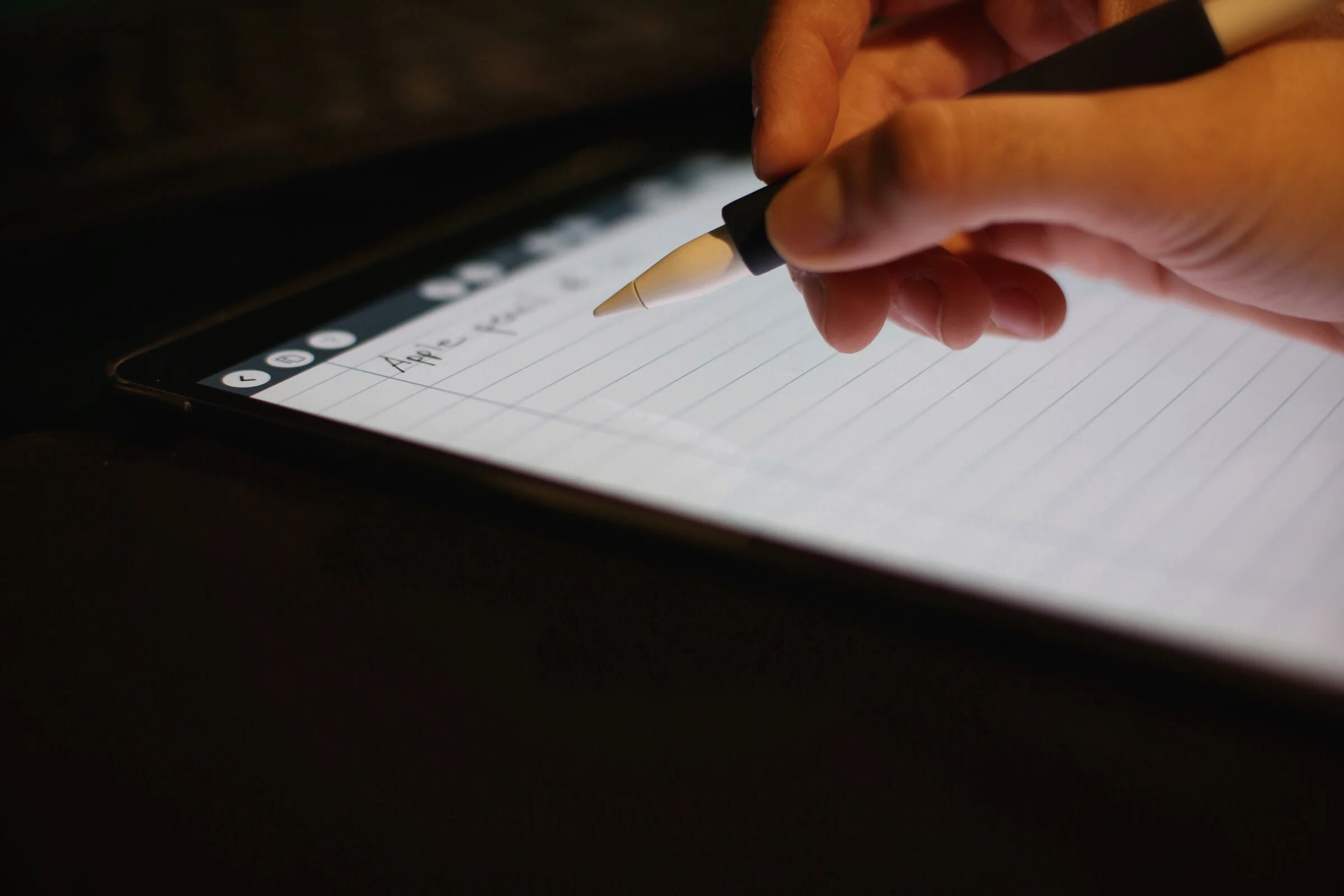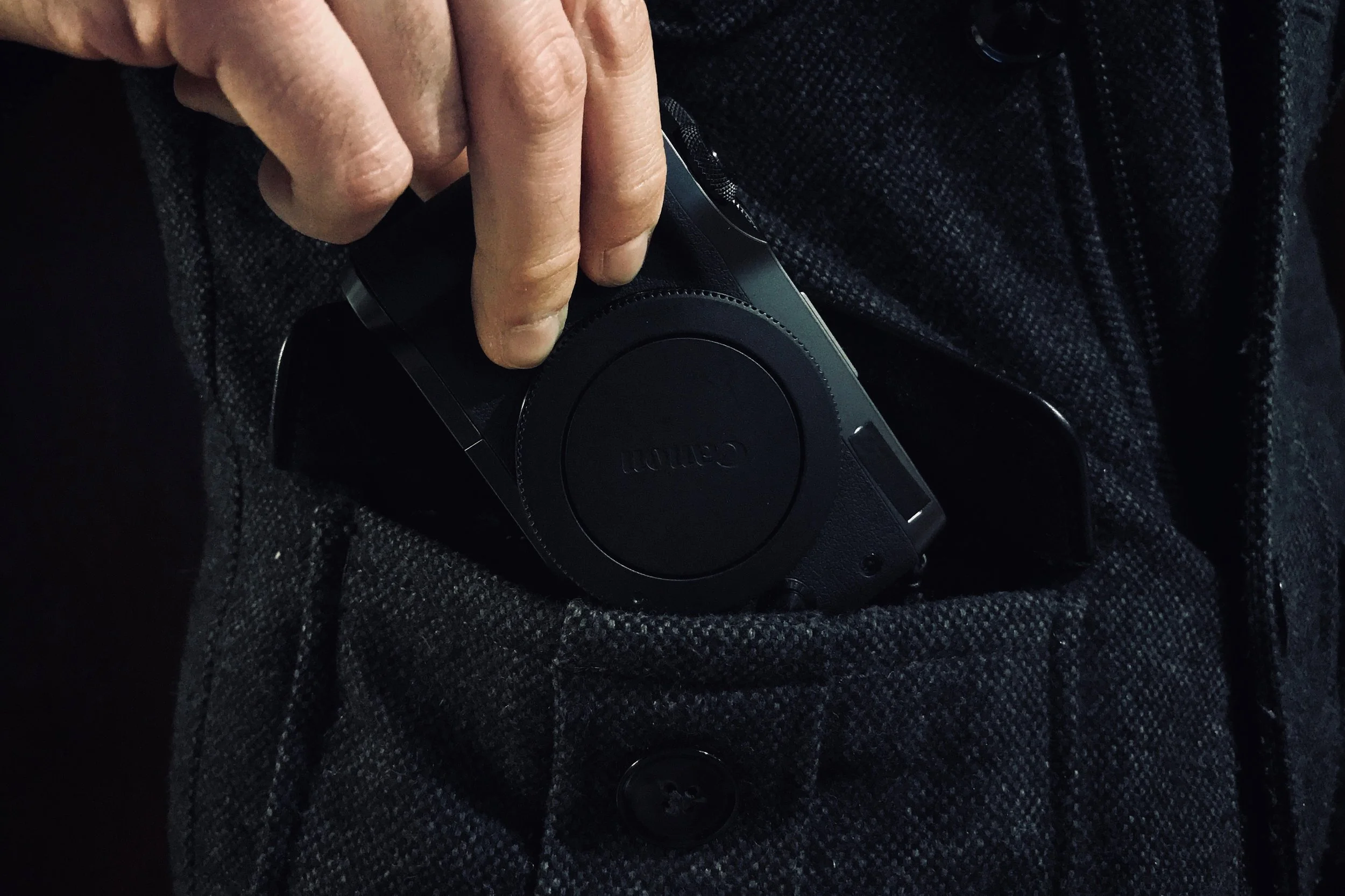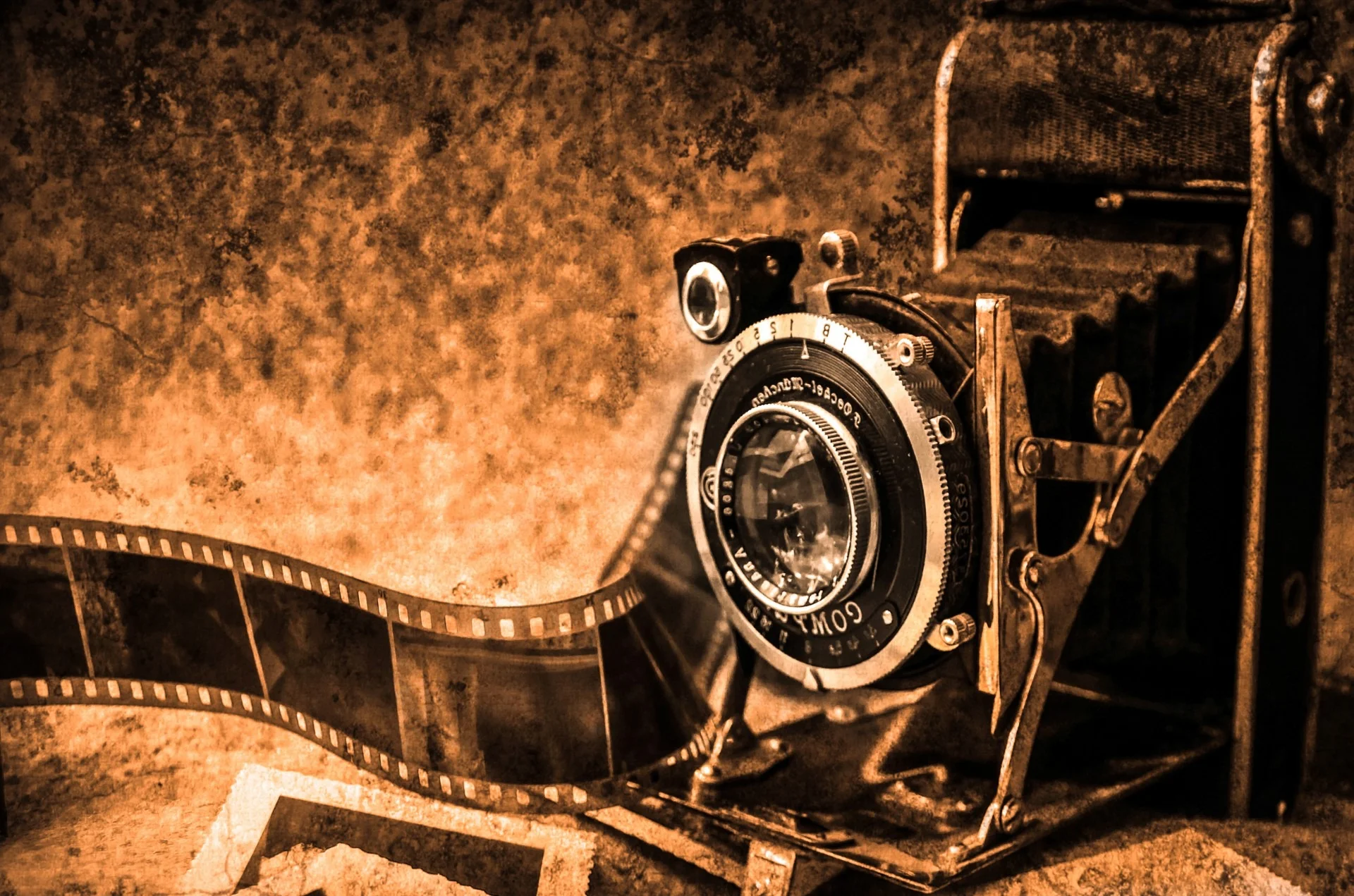Canon EOS M6 Review: The entry level travel camera from canon
“In photography there is a reality so subtle that it becomes more real than reality.” - Alfred Stieglitz
All links are affiliate links
A dedicated camera, whilst not mandatory can be a useful tool to capture your travel memories. There are two types of people who use dedicated cameras while traveling; ones who use small cameras that are easy to carry and those who use power house beasts of cameras. New mirrorless cameras walk the line between a well preforming DSLR level photography tools and a very compact sometimes pocketable shooter.
As an periodical traveler I find myself filling up my smartphone with travel pictures and yearning for a better preforming camera, but don't want to add extra bulk and weight on my person. My quest for a well preforming, high return on investment, small, and light camera began.
What I came too was Canons mirrorless line of cameras specifically the M6. If you are a casual shooter looking for a travel camera or an experienced photographer trying to lighten your DSLR load then the Canon M6 if its short comings can be overlooked is an all around well preforming entry level camera for an inexpensive price.
Canons Mirrorless line
Currently Canon offers few mirrorless options and all of them are of APS-c (crop) sensor size. These cameras are the M5, M6, and M100 in order of price. The M6 sits in the middle of its line but is only different from the M5 in 3 major ways.
The first is the M5 has a built in electronic view finder or EVF. There is an optional hot shoe EVF for the M6 for about $200. The optional EVF will provide the same great 2.36M dot 120HZ oled quality as the built in EVF of the M5. The cost of using the external EVF on the M6 is this will overtake the only hot shoe on the camera. The lack of viewfinder means the M6 is much smaller then the M5 but I will go into more details on size and weight latter.
The second is the M5 has a larger 3.2 inch and higher resolution 1620K dot display compared to the 3 inch 1040K dot display on the M6. Don't be worried about this as the display on the M6 is a great display and is the same size and resolution of what most other small form factor mirrorless cameras use. The M5 just goes above and beyond what most of its competitors are using.
Along with the change in display the M5 and M6 display is adjustable. The M6 display will rotate 45 degrees down and a complete 180 degrees up so that it can be viewed from the front. This is great for selfies or vlogs. The M5 can do the same but in reverse. The M5 display can rotate 45 degrees up and 180 degrees down. This is equally as good for selfies but for vlogs this means you wont be able to see the display when connected to a tripod.
An adjustable display of the M6 like this is great or youtube videos. The viewable screen can let you frame your shot without an external display. If your interested in vlogging amazon has a vlogging kit with the m6, a rode mic, carrying case, filters...
The third difference is the price. The M6 comes in at $679 or about $250 less then the M5 making the M6 a very affordable camera. Even with the optional viewfinder this camera comes in at about $50 less expensive. It is important to note that the differences in the M5 and M6 are external. The image processor, sensor, and performance across these two cameras are equal.
The Canon M6 is smaller and feels smaller then the M5. The lack of EVF and smaller screen make this a more compact and lighter camera coming in at a messily 390 grams or .86 pounds. The M6 is very light weight and almost feels like a point and shoot or compact. With a smaller lens such as the 22mm f/2 pancake this camera can fit in almost any jacket pocket. This camera feels so much smaller because it is shorter then the M5 and has a less prominent grip. I find that my pinky hangs in mid air on the shorter M6, but in no one is it an uncomfortable camera to use.
My favorite lens for the native EF-M mount system.
A Well Preforming Entry Level Camera
To give a better understanding of the performance of the M6 (or even the M5) the camera sports a 24 megapixel (Canon 1.6 crop factor) APS-C CMOS sensor with Canon's DIGIC 7 image processor. This is the same sensor and image processor on Canons EOS 77D DSLR.
You can expect great quality from this camera with ISO range of 100 to 25,600 natively. Grain is clearly noticable at around at 1600 and is still usable up to 3200 (with post processing). With a APS-C sized sensor (closest thing to a full frame) you can expect good performance in low light.
The display has many degrees of motion to achieve a comfortable viewing angle.
The color science of Canon cameras is beloved by many and the M6 does not disappoint. Colors look vibrant and real. This makes videos and pictures really come to life without need for post processing.
The camera can shoot at 9fps with a buffer size of 27 JPEG or 17 Raw frames with auto focus locked. The shooting speed is fast and probably more then you will need out of an entry level camera, however the buffer size is what you would expect from a camera in this price range. Turn on servo autofocus to get a slightly reduce focus of 7 fps. You can drop down the shooting speed to 4 fps and get an expanded buffer size of 30 frames. This is a nice touch as you can prioritize how you want to shoot.
The video capability on this camera is not that impressive. The camera can achieve a great looking video at 1080p 60fps, but does not support 4k recording. Now if you watch much youtube you will find a lot of big youtube's stating that 4k is not a big deal because most people watch youtube on tables or phones. I would also agree with this, but If you are looking at this as a professional video camera then you should look else where. For an average user you might not want 4k as it takes up a lot of hard drive space and requires a powerful device to edit.
The flip out screen fully articulated up.
Quality of the video besides not having 4k is great. Canons Dual Pixel AF really shines here as the focus is always spot on. It is so painful watching those Panasonic Lumix G videos where the focus is off %50 of the time. Canon really pulled ahead here.
I need to talk more about this auto focus. Focus on this camera is great and compares to focus systems on most higher priced cameras. The canon M6 has 49 focus point which may not seem much for a mirrorless camera, but the Dual Pixel AF system really pulls its weight. Pulling between focuses is so buttery smooth and with no stuttering at the point of focus resulting in very pleasing to the eye focus pulls.
During rapid shooting of a moving objects the M6 for the most part held focus on the subject face with only a few shots off. I would like to have seen eye tracking but the face tracking works well even in low light.
Besides the basics that you will find across other APS-C cameras Canon incorporated features such as; focus peaking, exposure bracketing (+- 2 EV), time lapse, a bunch of shooting modes, and electronic level to name a few. The M6 doesn't break new ground in features but does cover more then just the basics.
Small, light, and good looking.
A Hassle Free Travel Camera
The M6 feels solid in hand. It has a plastic shell built around a metal body so the camera feels dense and sturdy. This feeling gives me confidence that I can it bring it with me and it will be able to take the accidental abuse it might get.
The dials on the camera are made of metal and are very satisfying to use. The camera has a group of 4 rotating wheels on the top of the camera. These include one mode switch dial, exposure compensation dial, and two multi-function dials. The two multi-function dials change depending on what mode you are in but can also be assigned a specific function. You can customize half the buttons on the camera which is nice.
The M6 has all it's buttons on the side of the camera where the grip is.
The M6 has a third multifunction wheel around the control pad. Using these three dials in manual mode you can adjust the exposure triangle or if in a priority mode you can adjust your setting using the dial around the shutter button.
Canons menu layout is quite descent. After a small learning curve you get the feel of where things are. I can see room for improvement here as submenus hide options that you may have not known about.
The best part of the M6 is Canons amazing touch interface. The touch screen lets you touch through menus, flip through photos, pinch to zoom, or touch to focus. Touching a setting on the screen such as iso, shutter speed, or aperture while shooting will allow that setting to be adjusted using the control dial around the shutter button.
When your traveling you don't want to be fiddling with a camera so it is a god sent that this camera has such an easy to use touch interface. This interface is on par with premium smartphones.
The Camera Connect app from Canon is simple and reliable.
Connectivity and Battery Life
Included in the M6 is a well implemented wireless system which includes bluetooth, wifi, and NFC to connect a smartphone or tablet. Canon provides an app so that you can interface with the camera when connected.
The wifi lets you transfer pictures to the connected device at blistering speeds. Connection is as easy as touching the connect button on the camera and then opening up the app on your smartphone. The camera will then try to connect on a local known wifi and begin searching for the device. If it cannot find a wifi it will create its own allowing you to connect to the camera.
I found this to work reliably and transfers are very quick. The whole system is very convenient For the most part the app is quite basic. In addition to allowing one to download and view images it will also present a live view of what the camera is seeing and provide basic camera setting controls.
The camera does not have a cable shutter release but through the app you can release it remotely or start a recording. This will provide vibration free shutter releases without the need for timers or can be used to start a recording from across the room for maybe a youtube video.
The bluetooth on the device can provide low power connections to remotes such as this amazon basics remote for canon cameras or connection to your smart phone for the remote shutter feature.
Battery life is ok. Canon says you can get 300 shots out of a charged battery. Canon has implemented basic battery saving features such as turning off the display after no use or shutting off the camera entirely. Honestly I use at most 2 batteries when going for a extended day of shooting but because the batteries are compact I don't mind carrying an extra in my pocket.
What pains me is that Canon did not include the ability to charge via the usb port. This means once your battery dies you need to shut off the camera, pop open the battery compartment, and replace the battery. This is no good if you are recording for long periods of time and you want to keep the continuity of the shots. The tripod mount is near the battery door so if the tripod plate is to big you wont be able to replace the battery without removing the plate. Annoying shortcomings of the camera but be reminded this is not a pro level video camera.
The upside is that batteries are inexpensive. I picked up these batteries and a charger for less then $30. I will always have an extra battery in my pocket and will carry three with me on any trip so in the end battery life hasn't been a big problem for me.
The EF-M 11-22mm IS lens is one of the best preforming lenses in the EF-M lineup.
Lens Ecosystem and The EF-M Mount
When you buy into a camera body you are also buying into an ecosystem for the most important part of a camera, the lens. Canon makes some top notch lenses for their DSLR's and that same quality extends to their mirrorless lineup. There may not be many native lenses for the M lineup, but what is available is inexpensive and with great image quality. I would recommend checking out Christopher Frost videos on youtube for lens reviews.
I wasn't impressed with the kit lens. Do not get me wrong, if you get the kit lens it will be completely usable, but there are some nice lenses on the market for the EF-M mount that the M6 uses.
Some recommendations is the 11-22mm f/3.5-6 with image stabilization for an all around travel lens, 22mm f/2 prime pancake lens for a super small travel prime, 28mm f/3.5 macro lens with built in light and image stabilization for macro work, and lastly the older but better kit lens the 18-55mm f/3.5-5.6 image stabilized.
A really fun lens is the Mitakon Speedmaster 35mm f/.95. Yes you read that right, f/.95. This is a fully manual prime, but provides sharp image quality and costs under $500. Besides those lenses Rokinon is releasing some quality lenses for the EF-M mount system.
These lenses are inexpensive and yield good results. They are also small in form factor so they pair well with small form factor M6. For what the EF-M lenses are worth, they are doing a stellar job.
Canon might have a very limited selection of native EF-M lenses and the lineup is growing at a slow pace, but the prices of competitors equivalent lenses are much more expensive. Compare other 35 mm equivalent f/2 lenses of other brands and you will see my point. The price will be around %50 more then the well preforming EF-M lens. Just in lenses alone your return on investment for buying into a Canon M camera will be great.
The best part of using one of the M cameras is that with an inexpensive adapter you attach other Canon lenses such as the pro level L series lenses and get native autofocus capabilities. This opens the door to all of Canons lens lineup.
The EOS M6 has one last trick up its sleeve which is digital stabilization for video. Combining the lens and digital stabilization the Canon M6 can achieve a 5-axis stabilization. In use it works well, but it slightly reduces the image resolution of the video so this will be personal preference if you want to use it.
This lends well to its vlogging capabilities with its flip screen, 5-axis video stabilization, large sensor, dual pixel auto focus, and its dual stereo microphones at the top that provide descent quality, but also has a microphone jack if you want to bump up the sound quality.
Conclusion
If you know what your getting yourself into with the lack of EVF and no 4k the Canon M6 preforms well and is a compact camera with a great (yet limited) lens lineup at a suburb price. The great image performance and the top of the class autofocus makes this camera a joy to shoot on. With a pancake lens I can stick this camera in a jacket pocket and take it with me everywhere. With a camera like this you wont want to leave on a trip without it.
Pros:
Dual pixel autofocus
Image quality for price
Touch interface
Lens lineup preformance and price
Size and weight
Canons color science
Mic jack and flip up screen for vlogging
Built in flexible flash
Cons:
Limited Video capabilities
Battery life is ok
No pass thru charging
No Electronic shutter
Not highest preforming aps-c camera
Grip could be bigger
Limited EF-M lens selection
Canon EOS M6 Gallery
As I take more pictures with the Canon M6 I will place them here.
















































